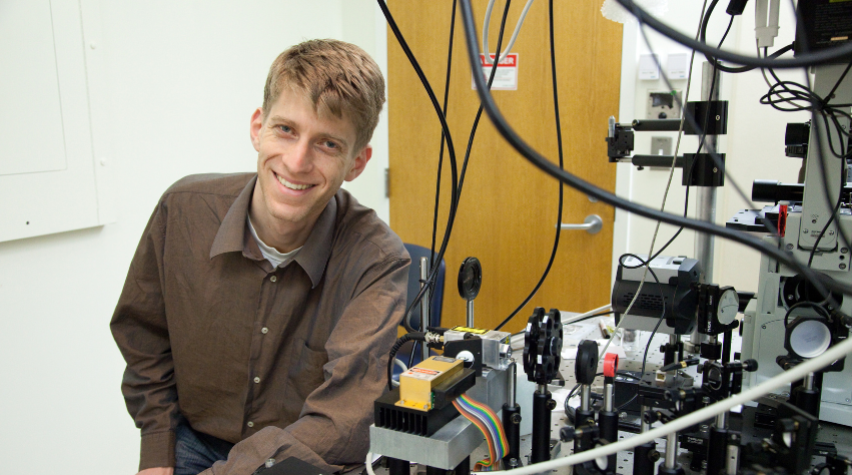
Organized by AIChE’s Society for Biological Engineering (SBE), the 2023 Synthetic Biology: Engineering, Evolution & Design (SEED) Conference will be held May 30–June 2 in Los Angeles, CA. Covering the field from its foundations to its commercial applications, SEED’s expert-led sessions offer insights into next-generation development strategies, incorporating perspectives from research institutions and industry. Reserve your spot by May 1 for best rates. Funding opportunities are also available to attend this event.
We caught up with keynote speaker Adam Cohen, professor in the departments of Chemistry and Chemical Biology and Physics at Harvard University, to discuss synthetic biology and its applications, the future of synbio, and what he’ll be speaking about at SEED.
For a general audience, what distinguishes synthetic biology from other areas of bioengineering?
I think of bioengineering as the engineering of tools and devices for studying or interacting with life; this could be developing microfluidics, or medical devices, or mechanical models of membranes. In contrast, synthetic biology is engineering with life: modifying proteins, cells, tissues, or even whole organisms to do weird and wild things that evolution never got to.
How do you envision synthetic biology advancing some of the challenges in engineering and society?
Let’s start at the beginning. In the beginning…there was the primordial soup. Single-cell life began about 3.7 billion years ago. Everything alive today—you, me, the animals and plants that we eat—is descended by an unbroken chain of inheritance from these single-cell creatures.
This simple fact has some surprising implications. The bodies of everything alive today had to emerge from relatively small changes from bodies that were able to survive and reproduce in their respective contexts over the past 3.7 billion years. And each gene in every genome had to help its host survive, or at least not be too harmful, in each context: from our ancestors in the Middle Ages, to their ancestors as hunter gatherers, to primitive hominids, small mammals, early reptiles, fish, aquatic invertebrates, single-celled eukaryotes, prokaryotes, and archaea for a few billion years.
This is a lot of constraints. The forms of life today are highly restricted by their evolutionary histories. This leads to an interesting paradox. On the one hand, life on Earth is hugely diverse. People estimate between ten million and a billion different species, if you include all the bacteria. Each has about 10,000 genes, and this leads to between 1011 and 1013 different genes on our planet today. This genetic diversity is an incredible resource of molecular function, and forms the basis of many of the most potent biotechnologies. But, how much of all possible diversity has evolution explored?
A typical protein is a chain of about 200 amino acids. At each point in the chain, there are about 20 possible amino acids to choose from. This means that there are about 20200 possible proteins. Since these are rough numbers, let’s call it 10200.
These are big numbers, and it can be difficult to visualize how much bigger the space of the 10200 possible proteins is compared to the 1013 protein types that actually exist. So, here’s an analogy. 1013 is approximately the number of atoms in a single red blood cell. 1080 is the number of atoms in the entire universe: not just on Earth, not just our solar system or galaxy, but in all galaxies everywhere. And the number of possible proteins is more than that number of atoms, squared!
The point is that evolution has only explored a vanishingly small fraction of possible genetic and animal diversity.
Over the past few months, we’ve seen incredible advances in our ability to design proteins with new structures and new functions. This is amazingly cool and powerful. We are increasingly able to perform sculpture, artwork, and engineering with the stuff of life itself. The genes and creatures we create no longer have to have an inheritance that goes back to the primordial soup. Instead of being constrained to the 1013 genes that already exist, we can explore the space of 10200 possible genes.
But in biology, proteins don't usually act in isolation. I think the next steps will be to design assemblies of proteins and biochemical pathways which can function in the context of a cell; and then to design cellular systems which can self-assemble into tissues and ultimately life-forms that are hugely different from anything alive today.
Perhaps we can use these tools to engineer drought or pest-resistant crops; mosquitoes that do not transmit malaria; new sources of biofuels; or enzymes that degrade plastic waste.
What specifically will you be talking about at the conference?
I'll be talking about my lab's effort to develop molecular tools to record from every neuron in the brain. I'm excited to hear from all the other speakers, as well!
What message would you like the audience to take away from this year’s SEED?
It's a very exciting time to be working on synthetic biology!
About SBE
Established in 2004, the Society for Biological Engineering is a technological community for engineers and applied scientists integrating biology with engineering. Members of SBE come from a broad spectrum of industries and disciplines and share in SBE’s mission of realizing the benefits of bioprocessing, biomedical and biomolecular applications. Learn more about SBE.

